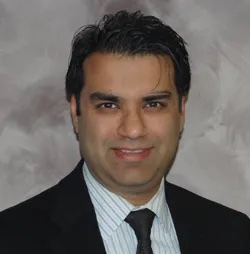Laser Technology

In addition to our two surgical suites, the Eye Surgery Center of Hinsdale is proud to offer a specialty laser procedure room. Our mission is to provide an outstanding experience for patients undergoing outpatient cataract, laser, and eyelid surgery.
Yag Laser
YAG laser treats patients who have developed posterior capsular opacification, a clouding of the lens capsule after cataract surgery. Posterior capsular opacification symptoms may include night glare, along with: cloudy, blurred, and hazy vision. At times patients believe their cataracts may have returned due to these symptoms. Fortunately, cataracts do not come back. A simple, effective YAG laser treatment procedure can eliminate the symptoms. The YAG laser creates short-pulsed, high-energy light beams to push aside the cloudy capsule and clearing the visual axis without any physical instruments entering the eye.
This allows the proper amount of light to pass through the retina, eliminating the cloudy and blurry vision. After the quick and virtually painless procedure, most patients notice a difference immediately, while others may take a few days. Patients remain at the surgery center for a short while to insure that their intraocular pressure is not elevated prior to discharge. Patients are instructed that it is normal to see “floaters” for a few days. In addition, they are also provided a list of symptoms to watch for, and call the doctor in case they are experiencing those symptoms. Recovery time is quick, generally only one day.
SLT- Selective Laser Trabeculoplasty
The SLT uses very low levels of energy to treat patients with open-angle glaucoma. The procedure is very quick and generally only takes 5 minutes. The main goal of the laser treatment is to reduce the intraocular pressures (IOP) associated with glaucoma. The SLT laser treatment is designed to reduce the IOP to a controlled level by increasing the drainage of the intraocular fluid. In most cases, patients who have the SLT laser treatment can significantly reduce or eliminate their need for glaucoma drops. In addition, the SLT laser creates very little heat to the surrounding tissue, indicating the procedure may be repeated safely if needed in the future.
Patients remain at the surgery center for a short while and have their intraocular pressure checked prior to discharge. Patients are instructed that it is normal to see “floaters” for a few days. In addition, they are also provided a list of symptoms to watch for, and call the doctor in case they are experiencing those symptoms. You will see the doctor for a follow-up visit in 1 week. Recovery time for this procedure is quick, generally only one day.
Laser Procedures Performed In-Conjunction With Surgery
Co2- Carbon Dioxide Laser
This laser is filled with carbon dioxide gas and uses a short-pulsed light energy, or continuous light beams, to remove the top layer of the skin, with minimal heat damage. The CO2 laser is used often, and is very detailed when vaporizing the skin tissue. This procedure is usually done in conjunction with eyelid surgery or blepharoplasty. After the procedure it is important to keep area clean, apply ice for eight hours and on and off for two days, and ointment twice a day for one week. Follow-up with your surgeon one week after the procedure.
The CO2 laser is used to treat skin disorders, such as:
- Cosmetic skin irregularities
- Skin cancer
- Wrinkles and scars
- Warts and birthmarks
After the procedure, the area treated is extremely red. It important to keep area clean, meaning no powder or make-up for ten days. There is very limited peeling. To limit infection, an antiviral oral prescription will be prescribed. This medication needs to be taken 2 days prior to the procedure and 8 days afterwards (total of 10 days). In addition, patients need to apply Aquaphor (can be purchased at any drug store), an over-the-counter topical cream, to prevent the skin from drying and aid in the healing process. The recovery time is short after the CO2 laser, generally only taking two weeks.
ECP – Endoscopic Cyclophotocoagulation
The ECP uses laser energy to control glaucoma. This outpatient procedure can be performed on its own or during cataract surgery. This quick 2-5 minute procedure allows many glaucoma patients to decrease their drops, which are needed to control their intraocular pressure (IOP).
The ciliary body of the eye, which produces a clear fluid, is treated with the laser. After the treatment, the fluid pressure is reduced. Your surgeon will see you in one week and check your eye pressure. Recovery time is quick, generally only one day.
If you have any questions regarding the eye surgery center of Hinsdale, instructions or forms relating to your procedure, or your upcoming treatment, please do not hesitate to contact us.

